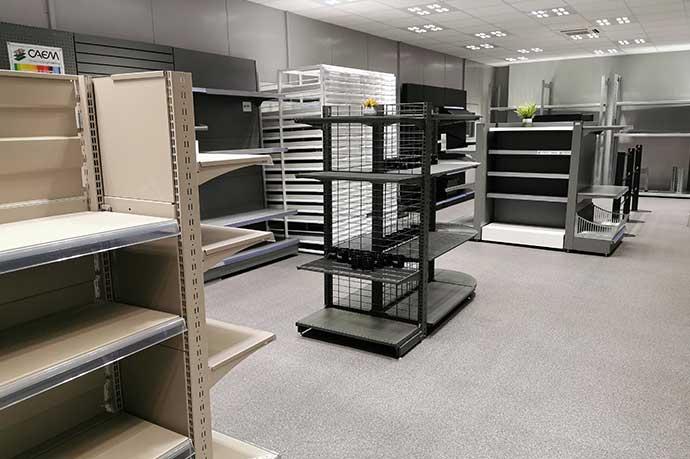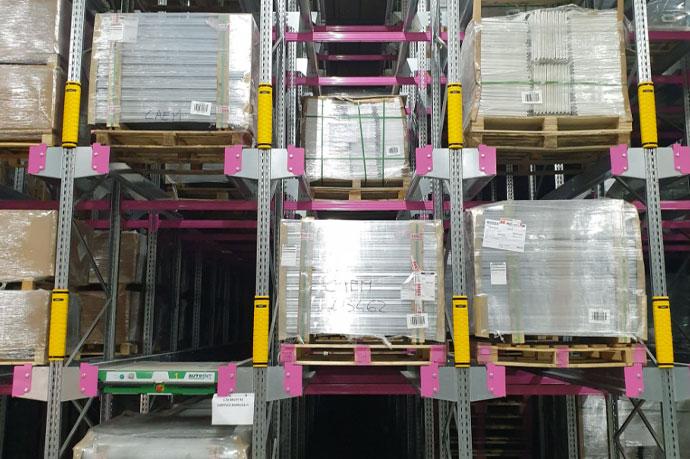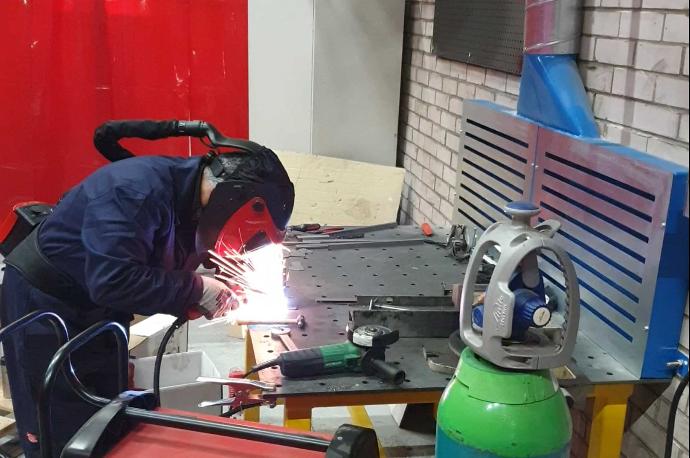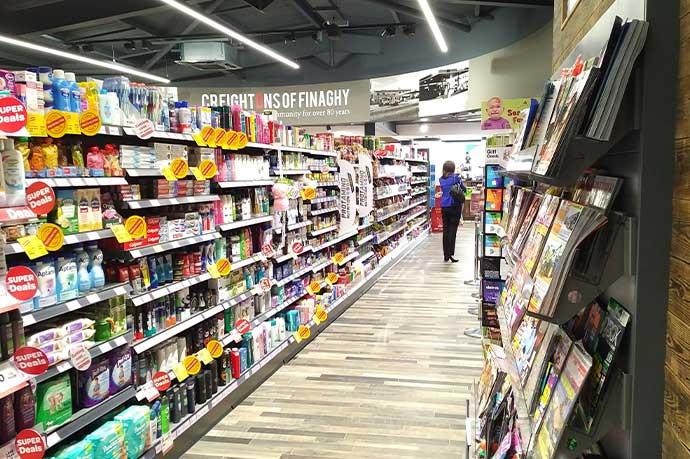Retail Backroom Storage Optimisation: shelving for optimal operations
Retailers today face mounting pressure to keep the stock room running like clockwork, balancing in-store inventory needs with the demands of online fulfilment. At CAEM, we have seen first-hand how the right shelving systems transform backroom efficiency, staff morale, and ultimately, store profitability. Let's explore the essentials of retail backroom storage optimisation, practical strategies, and the innovations leading the way.
Understanding Retail Backroom Storage Challenges
Common Issues in Modern Retail Spaces
The modern retail backroom is no longer a simple holding area. It serves as the engine room for both traditional sales and omnichannel fulfilment, often within a limited footprint. Retailers must juggle an ever-wider range of SKUs and manage unpredictable surges in demand, especially during seasonal peaks. The financial stakes are significant, with global inventory distortion costs reaching $1.77 trillion in 2023, split between $1.2 trillion in out-of-stocks and $562 billion in overstocks.
Rigid, static shelving wastes valuable cubic space, while poor organisation leaves staff scrambling to find products, increasing the risk of errors and misplaced items. Without flexible storage solutions, retailers struggle to adapt to fast-changing product ranges or fulfil both online and in-store orders seamlessly. Cramped layouts and lack of ergonomic design can also sap productivity and morale, making every shift a challenge for staff.
The Impact of Inefficient Storage on Operations
When backroom storage isn't optimised, the effects ripple throughout store operations. Staff spend more time searching for items, slowing down restocking and order picking. This not only impacts workflow but also customer satisfaction when shelves sit empty. The scale of this problem is staggering, with persistent stockouts costing retailers nearly $1 trillion worldwide annually as of late 2024.
Inaccurate counts and poor rotation lead to overstock, out-of-stock, or even wasted inventory, directly affecting profitability. A cluttered backroom also raises safety risks and can lower staff morale, further increasing operational costs. Human error compounds these issues, affecting 43% of warehouses worldwide and resulting in costly mistakes that proper organisation and automation can help minimise.
Benefits of Effective Backroom Storage Optimisation
Improving Efficiency and Productivity
Optimised retail storage solutions reduce the time employees spend searching for products, allowing for faster restocking and order fulfilment. At CAEM, our modular shelving and smart locker systems have enabled retailers to achieve up to 20% faster restocking and significantly fewer out-of-stock situations, streamlining both front-of-house and backroom operations. When staff can access inventory easily and safely, productivity soars and onboarding new team members becomes far simpler.
The benefits extend beyond immediate operational improvements. Recent case studies show that retailers implementing dynamic storage systems have seen picker travel time reduced by up to 40%, directly speeding up restocking and order fulfillment while reducing physical strain on staff.
Cost Reduction and Space Maximisation
Making the most of every square metre matters. By maximising vertical and horizontal space, retailers can store more inventory without costly expansions. The deployment of advanced shelving and dynamic storage systems has led to up to 30% reduction in labour costs related to stock monitoring and shelf restocking for many clients, with ROI typically realised within 12–18 months.
Real-world implementations demonstrate these benefits clearly. A major big-box retailer's transition to dynamic storage achieved 35% increased SKU density in the same footprint, while reducing shrinkage by 18% through better inventory rotation. The investment delivered full ROI within 12 months through labor cost reduction and improved sales from better shelf availability.
Enhancing Inventory Management Accuracy
A well-organised stock room, supported by clear labelling and systematic layouts, leads to more accurate inventory counts and fewer errors. The technology supporting these improvements is becoming increasingly sophisticated. Retailers using RFID technology now report up to 97% inventory accuracy, dramatically reducing errors like mis-picks and inventory discrepancies.
Technologies such as RFID, weight sensors, and digital price tags integrated into smart shelving and lockers give real-time visibility into inventory levels. This not only helps prevent stockouts and overstocking but also supports smarter, data-driven business decisions and makes regular cycle counts far less disruptive. With 77% of retailers planning to leverage real-time inventory visibility by 2025, the competitive advantage of accurate inventory management continues to grow.
Key Strategies for Optimising Retail Backroom Storage
Leveraging Vertical Storage Solutions
Tall shelving units unlock the full height of the backroom, dramatically increasing storage capacity without taking up more floor space. At CAEM, we engineer shelving systems with robust safety features and accessibility aids, ensuring staff can safely and efficiently retrieve products from any level. Grouping inventory by frequency of access, with fast-movers placed at ergonomic heights, further streamlines daily operations.
Utilising Dynamic Storage Systems: SpeedCell, SpanTrack, and Roller Racks
Dynamic, high-density storage systems like SpeedCell columns and SpanTrack wheel beds are game changers for SKU density and order picking speed. For example, SpeedCell can shrink 200 feet of traditional racking into just 40 feet, supporting faster picking and flexible zone organisation. Modular designs allow quick reconfiguration for changing product ranges or fulfilment models, keeping the backroom agile and efficient.
Implementing Efficient Labelling and Organisation
Clear, consistent labelling across shelves, bins, and sections speeds up picking and restocking, especially when combined with colour coding or numbering. Standardised layouts and signage help new and experienced staff quickly locate items, while digital records ensure physical and virtual inventories match. This disciplined approach supports efficient workflows and minimises costly errors.
Conducting Regular Inventory Audits and Cycle Counts
Continuous cycle counting allows for ongoing verification of inventory accuracy without major disruption. Well-organised storage areas make audits faster and more precise, helping prevent stockouts or overstock situations and supporting better data-driven decisions. Regular audits are essential for sustaining the benefits of retail backroom storage optimisation.
Real-Life Applications of Optimised Backroom Storage
Proven Results from Recent Implementations
Target's comprehensive approach to backroom optimisation demonstrates how data-driven storage improvements deliver measurable results. Their focus on right-sizing planograms and replenishment frequency led to inventory-related labor hours decreasing by 15% while maintaining consistent two-week demand availability on sales floors. The retailer achieved positive ROI within the first year through reduced emergency deliveries and improved shelf space utilisation.
A specialty retailer's KPI-driven approach yielded impressive results across multiple metrics. Inventory turnover increased by 22%, indicating goods moved more quickly from backroom to sales floor, while time spent locating merchandise dropped by 30%. The retailer saw their gross margin return on investment rise by 12%, with ROI realised in approximately nine months.
E-commerce fulfilment presents its own optimization opportunities. One online retailer's implementation of automated storage and retrieval systems delivered 50% increased warehouse throughput and 25% labor cost reduction, with the investment paying for itself within 15 months through improved operational efficiency.
CAEM Success Stories
Our work at CAEM demonstrates that strategic shelving and racking design can eliminate the need for multiple storage sites, improve operational efficiency, and future-proof capacity for business growth. One project enabled a retailer to accommodate diverse inventory types and improve the customer experience by ensuring products were always accessible and attractively displayed.
In another instance, a convenience store achieved a visually appealing, robust, and flexible shelving system that could be easily reconfigured as product ranges changed, directly improving both staff workflow and shopper satisfaction. These implementations showcase how tailored, modular storage solutions support both backroom logistics and front-of-house display requirements.
Innovative Storage Solutions for Modern Retailers
The Technology Revolution in Retail Storage
The global retail automation market reached $14.5-29 billion in 2024, with projections showing growth to $36-71.91 billion by 2034. This massive investment reflects retailers' recognition that automation and AI are no longer luxuries but necessities for competitive operations.
The integration of digital tools and inventory management software brings real-time tracking of stock levels, movements, and locations. Automated tracking systems cut manual errors, streamline replenishment, and enable rapid responses to changing demand. Smart shelves equipped with RFID or weight sensors, as seen in CAEM's latest solutions, provide instant inventory visibility and support seamless omnichannel fulfilment.
Retailers leveraging unified commerce platforms that integrate e-commerce and POS inventory data see significant benefits. These systems deliver 8.9% average sales increases, 22% total cost of ownership reduction, and 21% staff training cost decreases per location compared to separate systems.
Performance Improvements Through Automation
Food distribution case studies highlight automation's tangible benefits, showing productivity increases of 25% and annual savings of $250,000 when compared to traditional operations. These improvements stem from reduced picking errors, faster order processing, and optimised labour allocation.
IoT and predictive analytics enable shelves to automatically signal low stock levels, while RFID tags provide real-time product tracking. These technologies streamline storage operations, improve picking routines, and optimise stock levels, delivering measurable returns on storage technology investments.
Customising Storage Solutions with Pipe and Fittings
Every backroom is unique, which is why modular pipe and fittings systems offer unrivalled flexibility. Retailers can tailor these solutions to fit awkward spaces or accommodate unusual inventory types. Easy installation and reconfiguration mean updates can be made as business needs change, without the expense of specialised labour or major renovations.
Practical Tips for Retail Backroom Organisation
Optimising Space with Employee Lockers and Temperature Control
Providing secure lockers for staff personal belongings reduces clutter and supports a professional, organised environment. For retailers handling perishables or sensitive items, integrating shelving with temperature-controlled zones ensures safe storage and reduces spoilage. These small investments in comfort and compliance boost morale and protect valuable stock.
Strategically Managing Slow-Moving Inventory
Regularly reviewing inventory for obsolete or slow-moving items prevents the build-up of dead stock. Strategic discounting or donation of unsold goods can recover value and free up space for higher-demand products. Keeping inventory lean not only supports better organisation but also allows retailers to react swiftly to market trends, contributing to the overall agility that modern retail demands.
Creating Communication Systems for Staff Coordination
A designated area for staff communication such as a whiteboard or bulletin board encourages quick information sharing and helps document observations or maintenance needs. Centralising communication supports teamwork and ensures continuous improvement in backroom operations, particularly important as retail operations become increasingly complex.
Measuring Success: KPIs for Backroom Storage Optimisation
Identifying Key Performance Indicators for Inventory Efficiency
To gauge the effectiveness of retail backroom storage optimisation, retailers should focus on KPIs such as inventory turnover rate, backroom dwell time, order proposal accuracy, planogram compliance, and sales per square foot. Tracking these metrics provides actionable insights into space usage, replenishment efficiency, and the flow of inventory from the stock room to the sales floor.
Tracking Improvements and ROI from Storage Enhancements
Monitoring operational metrics including picking speed, replenishment time, and inventory accuracy allows retailers to quantify the benefits of storage upgrades. Analysing cost savings from reduced labour, fewer errors, and minimised stockouts or overstock demonstrates clear ROI. Based on recent implementations, retailers can expect ROI timelines ranging from 9 to 18 months, depending on the scope and complexity of improvements.
Consistent assessment ensures storage solutions continue to deliver value as needs evolve. The most successful retailers view backroom optimisation as a continuous journey, regularly evaluating performance and adjusting systems to maintain competitive advantage.
Future Trends in Retail Storage Optimisation
The Role of AI and Automation in Storage Solutions
Artificial intelligence and automation are reshaping retail storage beyond simple inventory tracking. AI-driven predictive analytics now power demand forecasting and inventory management, while automated micro-fulfilment centres and robotics accelerate order processing. Retailers leveraging these technologies achieve rapid fulfilment, higher order accuracy, and improved staff retention, as automation reduces physically demanding tasks.
The trend toward wearable technology and augmented reality is making backroom teams more efficient by enabling hands-free data access and reducing training time. As the number of AI engineers continues to rise globally, innovation in retail automation accelerates, making advanced solutions more accessible to retailers of all sizes.
Environmental Considerations in Storage Design
Sustainability is increasingly integral to storage design. Energy-efficient lighting, recyclable materials, and eco-friendly shelving systems help reduce environmental impact. At CAEM, we are committed to sustainable manufacturing, having reduced plastic consumption by 80% and offset thousands of tonnes of CO2 through solar panels and energy-efficient processes. These practices not only support corporate responsibility but also enhance operational resilience and brand reputation.
Conclusion: The Path to Smarter Retail Backroom Management
Strategic Takeaways for Modern Retailers
Optimising retail backroom storage underpins efficient operations, accurate inventory management, and superior customer service. The convergence of rising inventory costs, technological advancement, and competitive pressure makes storage optimisation essential rather than optional. With inventory distortion continuing to represent trillion-dollar challenges globally, retailers who invest in smart storage solutions position themselves for sustainable success.
The best results come from combining space-maximising equipment, robust organisational systems, and ongoing staff engagement. Embracing innovation and maintaining a culture of continuous improvement ensures that storage solutions keep pace with evolving business needs and deliver sustained competitive advantage.
Actionable Steps for Implementation
Begin by assessing your current backroom practices and identifying key pain points. Invest in adaptable, high-density shelving and dynamic storage systems to maximise both space and flexibility. Implement clear labelling, regular cycle counts, and communication tools to maintain organisation and accuracy. Monitor relevant KPIs to measure progress, and keep abreast of emerging technologies and sustainability trends to future-proof your backroom operations.
At CAEM, we are dedicated to helping retailers unlock the full potential of their backroom spaces. Our in-house design, manufacturing, and client-focused approach ensure every solution is tailored, robust, and ready for the demands of modern retail. For more information on our modular shelving, custom displays, and innovative storage solutions, visit CAEM.





